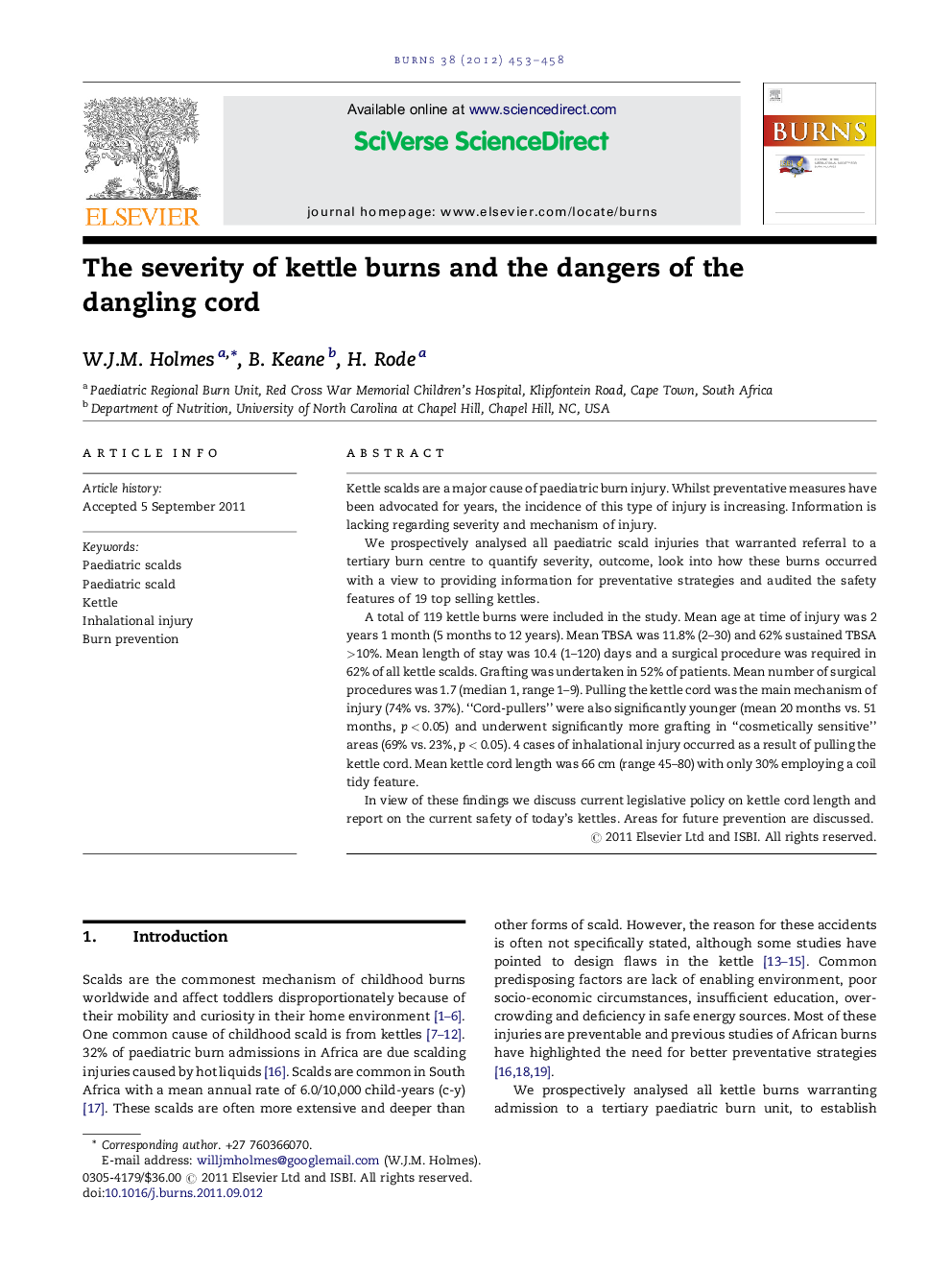| Article ID | Journal | Published Year | Pages | File Type |
|---|---|---|---|---|
| 3104806 | Burns | 2012 | 6 Pages |
Kettle scalds are a major cause of paediatric burn injury. Whilst preventative measures have been advocated for years, the incidence of this type of injury is increasing. Information is lacking regarding severity and mechanism of injury.We prospectively analysed all paediatric scald injuries that warranted referral to a tertiary burn centre to quantify severity, outcome, look into how these burns occurred with a view to providing information for preventative strategies and audited the safety features of 19 top selling kettles.A total of 119 kettle burns were included in the study. Mean age at time of injury was 2 years 1 month (5 months to 12 years). Mean TBSA was 11.8% (2–30) and 62% sustained TBSA >10%. Mean length of stay was 10.4 (1–120) days and a surgical procedure was required in 62% of all kettle scalds. Grafting was undertaken in 52% of patients. Mean number of surgical procedures was 1.7 (median 1, range 1–9). Pulling the kettle cord was the main mechanism of injury (74% vs. 37%). “Cord-pullers” were also significantly younger (mean 20 months vs. 51 months, p < 0.05) and underwent significantly more grafting in “cosmetically sensitive” areas (69% vs. 23%, p < 0.05). 4 cases of inhalational injury occurred as a result of pulling the kettle cord. Mean kettle cord length was 66 cm (range 45–80) with only 30% employing a coil tidy feature.In view of these findings we discuss current legislative policy on kettle cord length and report on the current safety of today's kettles. Areas for future prevention are discussed.
